

Constantinople (Italian : Costantinopoli) is a non-fiction travelogue book by Edmondo de Amicis published in 1877 regarding Constantinople in the Ottoman Empire, now Istanbul.


Constantinople (Italian : Costantinopoli) is a non-fiction travelogue book by Edmondo de Amicis published in 1877 regarding Constantinople in the Ottoman Empire, now Istanbul.
The first edition was published in 1877. [1] The original work had two volumes. Cesare Biseo illustrated an 1882 edition, and Brambilla wrote that this one "will help shape the European imagination towards Istanbul, and the Orient in general." [2] Multiple translations were derived from the Biseo version. [2]
In 2013 a new English translation by Stephen Parkin was released. [1]
A Turkish translation under the title İstanbul was published by Pegasus Yayınları. [3]
Alberto Brambilla of Sorbonne University wrote that the publication of the book and its reception were evidence of Amicis being "one of the best-known Italian authors abroad". [2] Orhan Pamuk has called De Amicis's work the best book written about Istanbul in the nineteenth century, [1] [4] while Umberto Eco stated that De Amicis' description of the city was the most cinematic, [5] and himself used the guide when visiting Constantinople. [1] Jason Goodwin has described the work as a real Victorian tour de force. [4] PD Smith of The Guardian wrote that the book is "A wonderfully eloquent account". [1]
William Armstrong in Hürriyet Daily News called it "An orientalist bore" with "annoyingly purple prose". [6] Armstrong stated "it isn’t clear what distinguishes De Amicis’ memoir from the dozens of similar tomes written by intrepid Europeans at the time." [6]

The Grand Bazaar in Istanbul is one of the largest and oldest covered markets in the world, with 61 covered streets and over 4,000 shops on a total area of 30,700 m2, attracting between 250,000 and 400,000 visitors daily. In 2014, it was listed No.1 among the world's most-visited tourist attractions with 91,250,000 annual visitors. The Grand Bazaar at Istanbul is often regarded as one of the first shopping malls of the world.
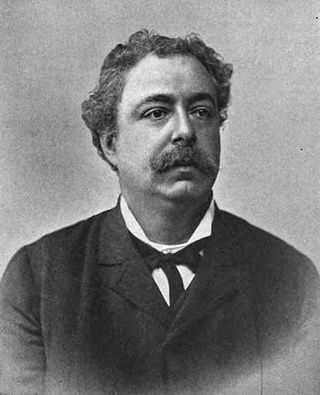
Edmondo De Amicis was an Italian novelist, journalist, poet, and short-story writer. His best-known book is the children's novel Heart.

The Galata Bridge is a bridge that spans the Golden Horn in Istanbul, Turkey. From the end of the 19th century in particular, the bridge has featured in Turkish literature, theater, poetry and novels. The current Galata Bridge is just the latest in a series of bridges linking Eminönü in the Fatih district and Karaköy in Beyoğlu since the early 19th century. The current bridge, the fifth on the same site, was built in 1994.

Beyoğlu is a municipality and district of Istanbul Province, Turkey. Its area is 9 km2, and its population is 225,920 (2022). It is on the European side of Istanbul, Turkey, separated from the old city by the Golden Horn. It was known as the region of Pera surrounding the ancient coastal town Galata which faced Constantinople across the Horn. Beyoğlu continued to be named Pera during the Middle Ages and, in western languages, into the early 20th century.

Heart is a children's novel by the Italian author Edmondo De Amicis who was a novelist, journalist, short story writer, and poet. The novel is his best known work to this day, having been inspired by his own children Furio and Ugo who had been schoolboys at the time. It is set during the Italian unification, and includes several patriotic themes. It was issued by Treves on October 18, 1886, the first day of school in Italy, and rose to immediate success.

Petrus Gyllius or Gillius (1490–1555) was a French natural scientist, topographer and translator.

Zeyrek Mosque or the Monastery of the Pantokrator, is a large mosque on the Fazilet Street in the Zeyrek district of Fatih in Istanbul, overlooking the Golden Horn. It is made up of two former Byzantine churches and a chapel joined together and represents the best example of Middle Byzantine architecture in Constantinople. After Hagia Sophia, it is the largest Byzantine religious edifice still standing in Istanbul.
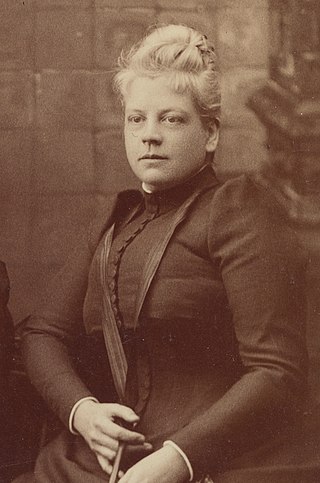
Isabel Florence Hapgood was an American ecumenist, writer, and translator, especially of Russian and French texts.
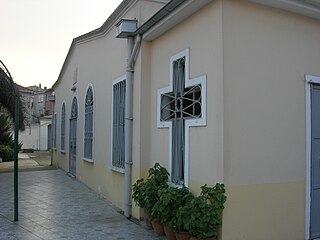
The Church of Saint Mary of Blachernae is an Eastern Orthodox church in Mustafa Paşa Bostanı Sokak in Ayvansaray in the Fatih district of Istanbul, just inside the old walled city. During the latter part of the Byzantine period, the original church complex on the site was one of the most important sanctuaries of Byzantium, arguably outstripping Hagia Sophia in importance due to its proximity to the Palace of the Blachernae. The Byzantine church complex was destroyed in 1434, and in the nineteenth century a small new church was built on the site. Today it is protected by a high wall, and fronted by a garden.

Fausto Zonaro was an Italian painter, best known for his realist style paintings of life and history of the Ottoman Empire.
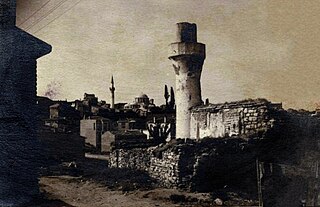
The Odalar Mosque was an Ottoman mosque in Istanbul. The building was originally a Byzantine-era Eastern Orthodox church of unknown dedication. In 1475, after the Fall of Constantinople (1453), it became a Roman Catholic church, dedicated to Saint Mary of Constantinople, until finally it was converted into a mosque by the Ottomans in 1640. The mosque was destroyed by fire in 1919, and since then has fallen into ruin. As of 2011, only some walls remain, hidden among modern buildings.
Toklu Dede Mosque, was an Ottoman mosque in Istanbul, Turkey. The building was originally a Byzantine Eastern Orthodox church of unknown dedication. It was almost completely destroyed in 1929.

Arslan Hane was a Byzantine Eastern Orthodox church converted into a profane building by the Ottomans in Istanbul, Turkey. The Church was dedicated to Christ of the Chalke, after the image of the Savior framed above the main entrance of the nearby Chalke Gate. This building, whose name stems possibly from its doors or tiles made with bronze, was the monumental vestibule of the Great Palace of Constantinople. The desecrated church, already heavily damaged by fire, was demolished in 1804.
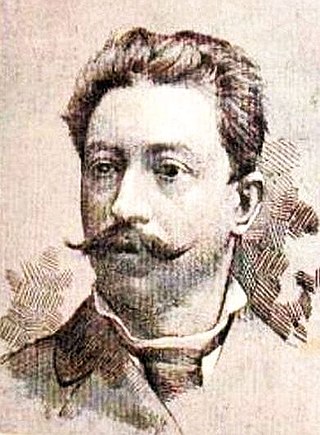
Cesare Biseo was an Italian painter, known primarily for his orientalist scenes.

Alberto Pasini was an Italian painter. He is best known for depicting Orientalist subjects in a late-Romantic style.
Ubertino Posculo, also spelled Ubertino Pusculo and Latinized as either Ubertinus Posculus or Ubertinus Pusculus, was an Italian humanist who was a student in Constantinople when the city was sacked in 1453 by the Ottoman army. Upon his return home, Posculo was the first to teach both Greek and Latin in Brescia.
Costantinopoli may refer to:

Oreste Del Buono was an Italian author, journalist, translator, literary critic and screenwriter.
Carmelo Samonà was an Italian academic and writer, as well one of the most important Italian Hispanists.